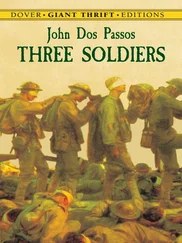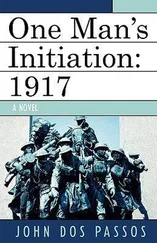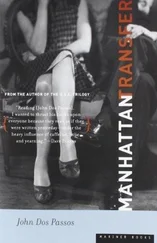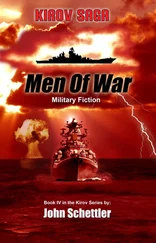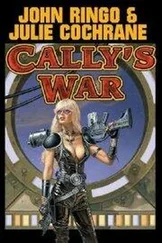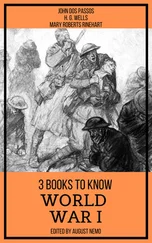On the other hand Leonard Wood’s and Theodore Roosevelt’s campaign for preparedness stimulated enthusiasm for enlistment in the militia. The Plattsburgtype camps and the R.O.T.C. were proving attractive to college men. The war spirit was rising among them. Citizen soldiers were not entirely unprepared for the shock when, on June 18, a few days before the humiliating ambush at Carrizal, President Wilson started calling out the state militias for service on the Mexican border.
The colleges and highschools had closed down for the season. American youngsters were curious about war. As they turned to the sports page in the newspapers it was hard quite to ignore the daily headlines. Young men dropped their search for summer jobs and hurried to enlist. Armories filled up with confused youths called in some cases all of a sudden from their beds. Many guardsmen with wives and young families gave up positions they had staked their future on.
The officers knew no more of soldiering than the enlisted men. Probably the outfit best prepared was an Illinois regiment which had been acting out wargames for the benefit of a motion picture company.
Equipment was lacking or thoroughly out of date. Most of the militia regiments were issued woolen o.d. uniforms impossible in the arid heat of the border country. Rifles and ammunition were in short supply. Machineguns were rare and mostly of unworkable types. For the purposes of logistics most units depended on the old Civil War wagon train. The army mule was still considered the proper means of military transport. The Quartermaster General in Washington was supposed to fill in deficiencies in the equipment of the state militias, but the War Department was ensnarled in requisition systems which had proved faulty in the campaign against Geronimo and almost fatal in the Spanish War.
The feeding and equipping of the national guard regiments was left largely to the good will of state officials and to the ingenuity of officers and noncoms yanked suddenly out of civilian life. Camps were improvised out of fairgrounds and on back lots, cook shacks and bath houses built, latrines dug. By guess and by God trainloads of excited young men found their way to the border.
Accustomed to think of themselves as volunteers, the militiamen were unexpectedly faced with the federal oath. Regular army officers supervised the grim ceremony. Their orders read: “If any man refuses to step forward and answer to his name when it is called, or refuses to raise his hand and take the oath, he is to be jerked out of line and placed under arrest pending courtmartial.”
Henceforward the militiamen were subject to the Articles of War. Overnight they found themselves in the straightjacket of a military caste system which ran counter to all the habits of democracy. Officers were superior beings, enlisted men coolies who must learn to obey orders with automatic alacrity.
The manual of arms. Close order drill. Atten’shun. Eyes front. Left dress. Wipe that smile off your face. Forward ’arch.
By midsummer a hundred thousand men sweltered under tents from Brownsville to San Diego. Boys who dreamed of marching on Mexico City found themselves standing guard among the dusty mesquite and the pricklypears. The sun beat down with the weight of a sledgehammer. Duststorms or “sand devils” blinded sentries on watch or snatched up hats or loose bits of clothing to whirl them out of sight into the air. Most of the time the country was dry as an oven but as summer advanced cloudbursts would wash out campsites and leave the desert a sea of slippery mud. There were continual latrine rumors of greasers sniping across the border and now and then a fulldress alarm when companies would throw themselves on their bellies and open fire into the dark. Like as not the alarm would turn out to have been caused, not by raiding bandits but by some sulky old Indian on a burro trying to sneak across the border to sell his watermelons.
The one universal gripe was the attitude of civilians towards enlisted men. Girls turned up their noses at anything less than a second loot’s gold bars. The first fruits of twenty years of fanatical agitation for prohibition was that the canteens only sold 2½% beer. Thirsty privates had to buy rotgut at fancy prices in blind tigers. On leave they were persecuted by military police and sheriff’s deputies. At Ysleta near El Paso the owner of a dance hall put up a sign:
DANCING FOR LADIES AND GENTLEMEN
SOLDIERS AND DOGS NOT ALLOWED
Building the canal in Panama and fighting yellow jack in Cuba and campaigning against the insurrectos in the Philippines, the Medical Corps had learned to cope, as no other army service in history, with the problems of military health in torrid regions. Sanitation was excellent. Outside of sunburn, heat prostration, cracked lips from the dry air and occasional outbreaks of venereal disease, the health of the troops was good, better, the public health men said, than it would have been at home.
Reports of the military aptitude of the militia were less favorable.
After the national guard units were mustered out in the late fall of 1916 the Militia Bureau of the War Department published the results of an inquest on efficiency:
“As to the present degree of readiness and fitness for field service of organizations of infantry, the answer in 89 % of the reports was either ‘fair,’ ‘poor,’ ‘unfitted,’ ‘not ready,’ ‘wholly unprepared,’ or the like; 46 reports out of 102 said that under the most favorable conditions it would require 6 months in the field to have the regiment meet an inferior enemy, and 2 years to meet trained troops; 10 reports stated that it was doubtful if organizations inspected would ever become efficient under their present officers.
“Of the cavalry, one third of the reports indicated that it would require from 6 to 9 months to make the organizations fit for service against an inferior enemy, and approximately from 2 to 3 years against trained troops. In 6 other reports 4 to 6 months was considered the time needed to make them ready for active service.
“In the field artillery there were 30 inspections—6 of regiments, 8 of battalions and 16 of separate batteries. In 17 the organizations were reported as ‘unfit for field service’ … None of the engineer organizations was reported as fit for field service …”
The regular army, though superior in the manual of arms, was not much better off in equipment than the militia. Testifying before a congressional committee during the following winter, the ranking U. S. Major General, Leonard A. Wood, pointed out that the regular army totally lacked hand grenades or instruction in their use, or the trench mortars which were proving so important in the fighting in Europe. There were virtually no machineguns or signal apparatus; no searchlights or antiaircraft weapons or usable airplanes for that matter. Field artillery was inadequate, small arm ammunition was in short supply. Nothing had been done to expand production of muchneeded automatic rifles. Coast defense guns lacked fire control systems. The few modern light guns the army had had been bought from a firm supplying the British, and American ammunition didn’t fit them.
Wood’s revelations were brushed off as “politics” at the War Department. He was not a West Pointer. Who ever heard of a commanding general coming up out of the Medical Corps? He was known to be deep in the councils of the Bull Moose wing of the Republican Party. When a friend pointed out that he was damaging his army career by his outspoken criticisms he answered:
“I realize that I cannot give information I am sometimes called upon to give without appearing to criticize those who have the power to remove me, but I am so sincere in my belief that I am on the right line that I am perfectly willing to run the risk of hurting myself with the heads of departments, if that is the price I must pay in my effort to teach the men of this country how to defend themselves.”
Читать дальше

